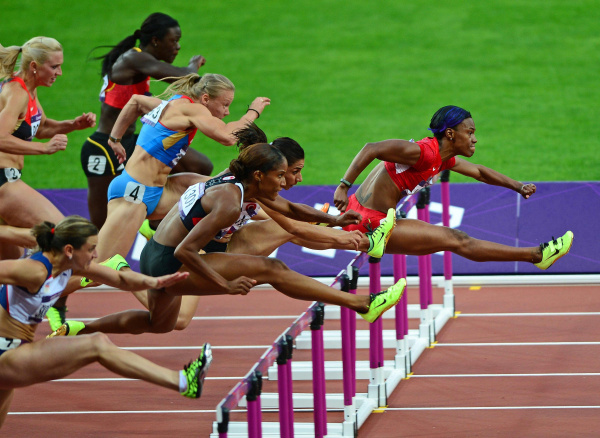Hello again fellow readers! This week our members collectively wrote a piece summarizing what we have been sharing with you all these past 10 weeks. We all hope that you, our readers, have enjoyed reading and learning about the kinesiology field as much as we enjoyed researching and expanding our own knowledge on the field.
What is kinesiology? The study of kinesiology has emerged as
a very unique and important field. It is the basis of many fields of study and
many lifestyles that shape the way health is looked upon. Because of the
behaviors of modern society and the constant need of new and improving medical
techniques, kinesiology is becoming very popular because, for many, it is a way
to incorporate athletics into the medical field.


In the field of kinesiology, a healthy diet plan and
exercising on a regular basis is beneficial to the human body. Exercise helps
burn calories, increase the body’s metabolism, and strengthen muscle tissue.
Many lose their motivation in the process of dieting and exercising. Learning
the basic ground of kinesiology helps aid people in understanding how important
being healthy really is.
Eating healthy has many benefits such as decreasing the risk of cancer, helping blood sugar, and improving brain function. One of our blogs Benefits of Eating Healthy covers these topics in more depth.
Eating healthy has many benefits such as decreasing the risk of cancer, helping blood sugar, and improving brain function. One of our blogs Benefits of Eating Healthy covers these topics in more depth.
Bad health behaviors have always been an unfortunate trend
in America. The increase of fast food chains and unhealthy restaurant choices
are huge among our generation. Other than poor diet, bad health behaviors
include not getting enough sleep, skipping breakfast, not drinking enough
water, smoking, drinking, and spending too much time indoors or looking at a
screen. Many bad behaviors like a lack of sleep can be fixed through some
professional help. This post, The
Occupational Therapist's Role is Sleep is very helpful if you are
more interested in this topic.
Kinesiology is the study of human and non-human body
movement. This field of study is driven by nutrition and physical activity.
Kinesiology has many applications to health these include sport, exercise,
rehabilitation, diet, What is
Kinesiology?.
biomechanics, and much more. Used as a complementary treatment option, kinesiology uses medical testing to find imbalances within the body. Those imbalances include chemical, structural, and emotional to determine healing needs. More on what kinesiology is can be found in the post
biomechanics, and much more. Used as a complementary treatment option, kinesiology uses medical testing to find imbalances within the body. Those imbalances include chemical, structural, and emotional to determine healing needs. More on what kinesiology is can be found in the post
The field of kinesiology has proven to be a great help. It
teaches people how to eat, exercise and to be overall healthy. Nutrition wise
it helps you know what’s in your food. The exercise aspect of kinesiology
teaches you how to workout and why it helps. An example of exercise technique
can be found in the post ProperPush-Up.This is important because working out improperly can cause
injury and inhibit you from activities further down the road. Also, what kind
of exercise is best for you. Our post on Strength or Endurance can give you more information on types of exercise.
Everyone has a different body type and a different end goal for themselves.
With the information shared within the field of kinesiology, we can learn to avoid unhealthy behaviors. As we said above, things like balancing diet and physical activity can be learned and will help your health tremendously. It can be very difficult to break bad habits but with the right tools and information, it becomes easier. For example, maybe instead of potato chips, you eat a bowl of grapes or that hour you were going to spend watching TV could be spent outside exercising. These are just a couple of examples of small adjustments people can make to improve their health.
Overall, kinesiology is a very widespread important field of
study. It is up and coming, always improving and that is what makes it one of
the most important medical fields. It has become very prevalent due to the
behavior of modern society in terms of physical activity and diets. With the
always increasing behaviors in our modern society, kinesiology has become
increasingly more important, as well.











